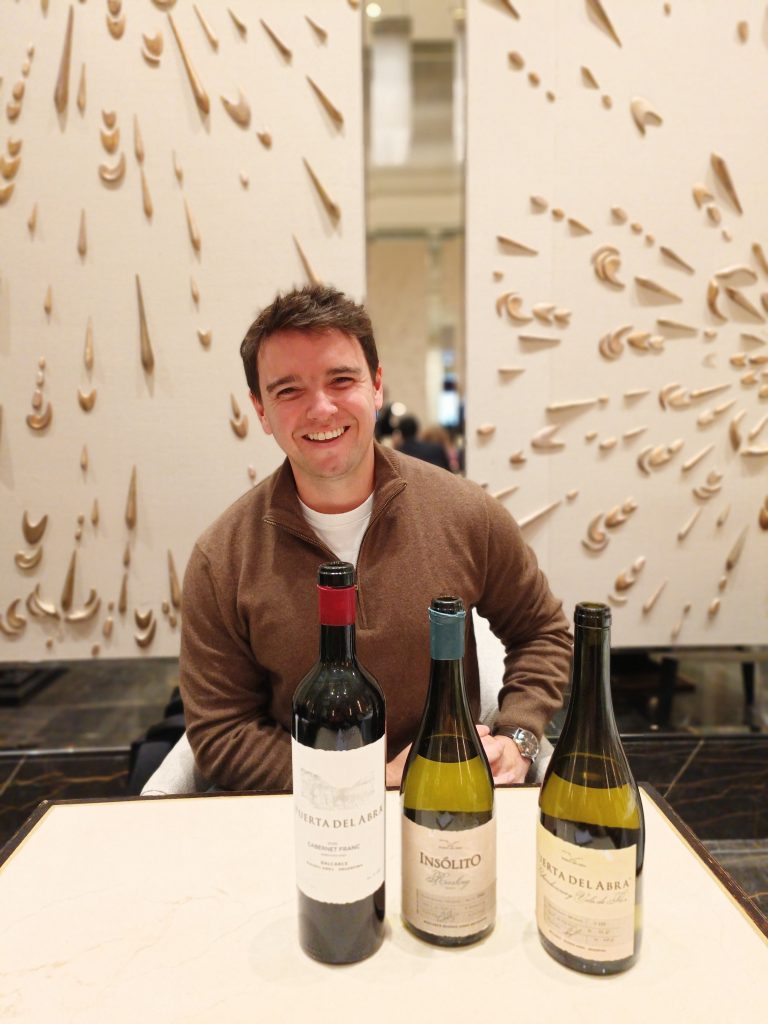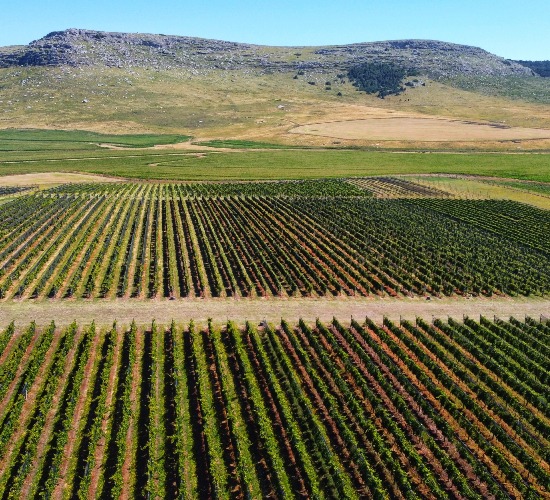If you’ve never heard of Balcarce in Argentina as a wine producing region, you’re probably in good company. But Sebastian Perez Companc of Bodega Puerta del Abra is hoping to change all that as he eyes up international expansion. Arabella Mileham reports.

Think Argentina and one thinks primarily of Mendoza and Malbec, perhaps Salta and Patagonia, Torrontés and fresh whites if feeling adventurous. However, one of the country’s newest GI’s, which was approved in 2022, is on the opposite side of the country from Mendoza, around 50km from the Atlantic in the Province of Buenos Aires, more widely associated with the flat Pampas lands and agriculture than viticulture.
Puerta del Abra was the first winery established in Balcarce, between Tandil in the interior and the coastal city of Mar del Plata, around 450km south of Buenos Aires. It started as a passion project by Jorge Pérez Companc, a businessman who loved wine and who intended it to be primarily for family and friends. However, he brought consultants Lydia and Claude Bourguignon (formerly advisors at Romanée-Conti, Comtes Lafon, and Leflaive), on board to establish the vineyard in 2013 and worked with Argentinian experts to better understand the terroir.
The 12-hectare plot of limestone and clay soils sits in the foothills of the ancient Tandilia mountain range, an area of “exceptional geological interest” Jorges’s son Sebastian told db, with some presence of granite. It is, he says, an ongoing development, to understand the limestone’s composition and how it varies across the plots, as well as how the vines react there.
With no windbreak between the foothills and the Atlantic, the area suffers from heavy rainfall (800-100mm per year) and strong winds (the first and last rows are meshed for protection). This led them to plant varieties that are less common in Argentina, such as Albariño, Riesling and Chardonnay for whites, and Tannat, Pinot Noir, and Cabernet France for the reds, along with a little bit of Bonarda and Merlot for the reds.
Puerta del Abra launched to the market in 2021 and now produces around 40-50,000 bottles a year, mainly supplying high-end restaurants and fine dining in Buenos Aires and a smattering in Mendoza. Sebastian admits that there was initially “a lot of education for the Argentina consumer to encourage them to explore something different from Malbec and different from Mendoza, and different from the wines that they are used to”, but the key to making Balcarce known – and distinct from the surrounding Pampas plains – is to establish these close relationships with customers in the on-trade, Sebastian argued.
As a result, he has set up an import and distribution system in the USA, starting in California, where is is based, which is part of “understanding what the reception would be like” for such a new area in Argentina. So far, the reception has been good, with distribution now in Spain and France, as well as in the UK, via Wine Lister.
“I’ve been travelling to Europe as well because we didn’t want to hide behind the process, we want to make sure that the person communicating the wine is part of the family,” he said. “We don’t want to sell a lot to everyone, it’s the other way around, Since we have such limited quantities, our main focus was to find those family and friends within the industry. We want to develop close relationships with the clients that we work with, because we believe that’s the way to bring Balcarce forward.”

Time for experimentation
According to Sebastian, the two criteria for the range, was to represent the land and terroir “in an authentic way”, be a bit different to wine already on the market, and produce wines the family personally loved. “When we started we had 13 varieties, including Gewürztraminer, and Malbec and we started to see what had the potential to have its own voice,” he says – so although the Malbec was good “it had no chance of standing alone against the Malbecs of Mendoza.” Bonardo, however, turned out to be “the best” varietal, along with Riesling and Albariño. These two varieties are also now being made by two or three other estates who are now producing wine around Balcarce.
And in its quest for something different, the original winemaker Delfina Pontaroli, who featured among The Drinks Business’s Top 100 Global Wine Masters in 2024, was given a brief to “experiment with different practises, different methods and to have some fun”, developing a Chardonnay that is aged under flor (70% is aged on the lees for 12 months, and 30% in oak before the biological ageing for a further 12 months), a fresh Riesling, an Albariño orange wine, and a still blanc de Noir, made from Pinot Noir and Tannat, in concrete eggs. New winemaker Mariana Boero, who worked with Pontaroli before Pontaroli stepped down in July, is experimenting with Austrian and Hungarian fine grain casks, which Sebastián says give less “intervention” than traditional French oak, as well as different barrels sizes, and the team are eying up a collaboration with the University at Mar del Plato to study native yeasts from Balcarce region.

“We like to see how each year expresses itself and try different practises to see how they interact with each other,” he says..
Sebastian argues that because Argentina has established itself as an industry staple, with its wines widely recognized for their quality throughout the world, and because they are using well-known varieties such as Chardonnay and Cabernet Franc, Riesling and Albariño “that the consumers recognizes but maybe not necessarily from Argentina” Balcarce has the ability to capture consumers’ attention. “We have that blend between recognized industry and recognized varietal that put them together into an uncommon wine”, he explains.
“We believe the wines that we are chasing today are not the full potential of what thee vineyard has to offer, so we’re very excited for the years to come.”
Related news
How can Argentina’s native grape hit the big time?
‘Argentina is more than Malbec’: Global buyers rethink Mendoza at Vinexpo Explorer 2025
Wines of Argentina unveils global campaign as exports surge in US and Brazil


Dining and Cooking